The National Gallery in London: Where to Start?
Having lived in London for the past three years as an art lover, I have had more than my fair share of questions about where to “start” at the...
Sophie Pell 3 February 2025
11 May 2018 min Read
The early 19th century is a period when France is going through historical changes on all fronts. The anger of the people roars, the streets of Paris tremble and bleed, the Arts are transforming, and the future of the country is being rewritten. Napoleon Bonaparte loses power, the Bourbon dynasty takes place, then Charles X tries to reinstate the monarchy by a coup, which will be at the origin of the revolution of July 1830. It’s the insurrection! In response, a new king is placed on the throne of France, Louis Philippe…
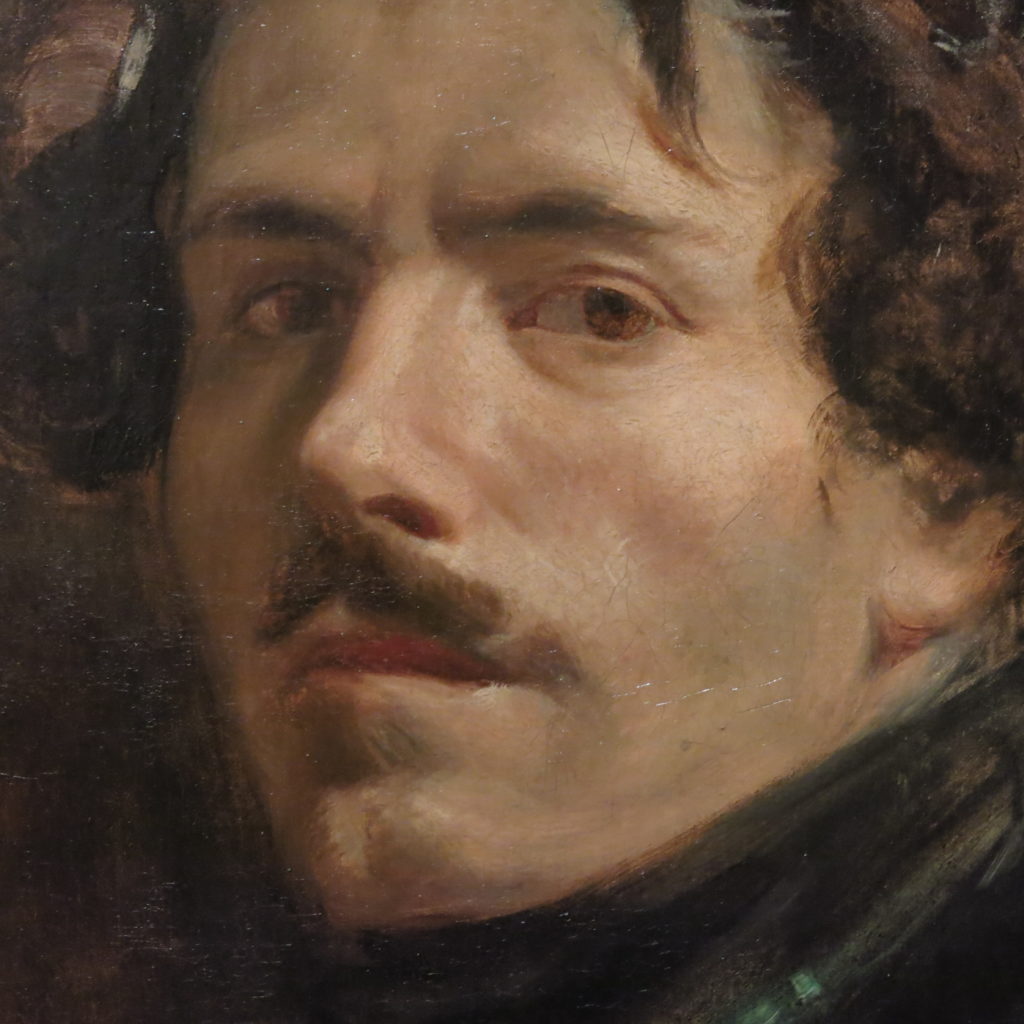
One artist, Eugène Delacroix, will be the spectator of all these events, their distant observer and interpreter.
And here we are, almost 200 years later, at the Louvre Museum in Paris which partnered with the Metropolitan Museum of Art to present to the public the life and career of this ingenious man. It may seem obvious to present Delacroix as a “genius” whose art has become a monument to his country and a Romantic symbol to the people. But what about the man’s life? One should also be willing to delve into the mind of this man: his obsessions, his desires, his revolts, and his passions.
So I invite you to plunge with me into the life of this contrasting man and a legendary artist, Eugène Delacroix.
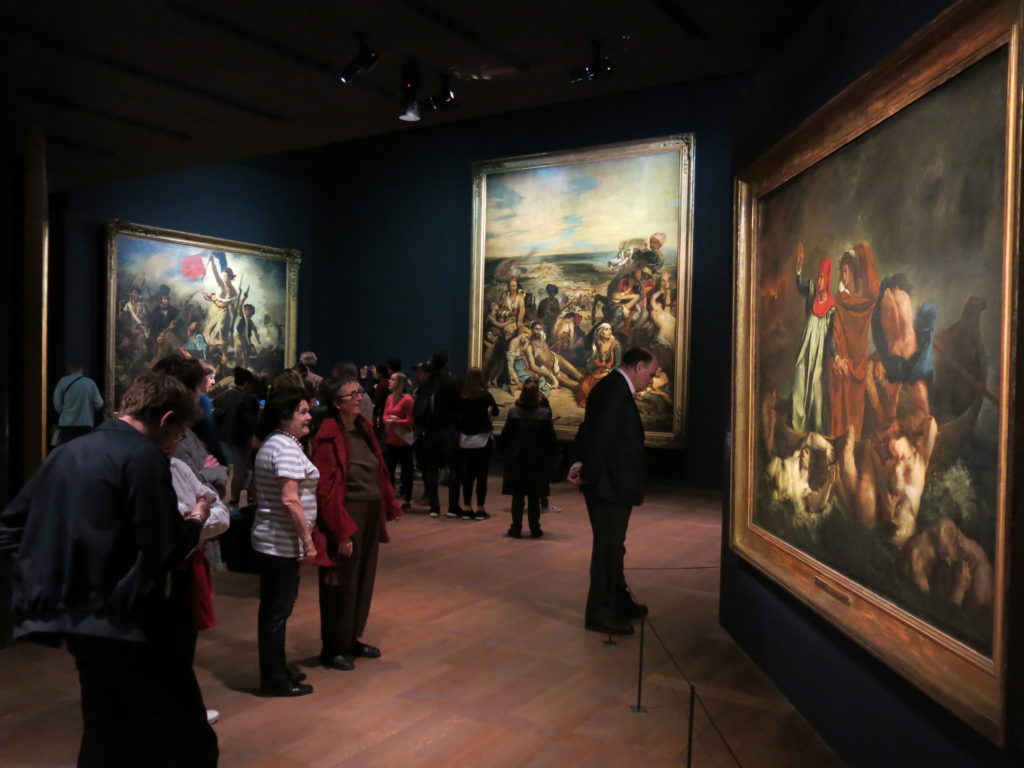
It was in 1822 at the Salon du Louvre that this 24 years old man made a breakthrough. At the time when the style was Academic, classicizing, and static, his dark and sulphurous painting “The boat of Dante”, (inspired by the Divine Comedy written by Dante Alighieri) placed Eugene Delacroix on the same level as the greatest painters of the time, such as Jean-Auguste-Dominique Ingres, to whom he was being compared.
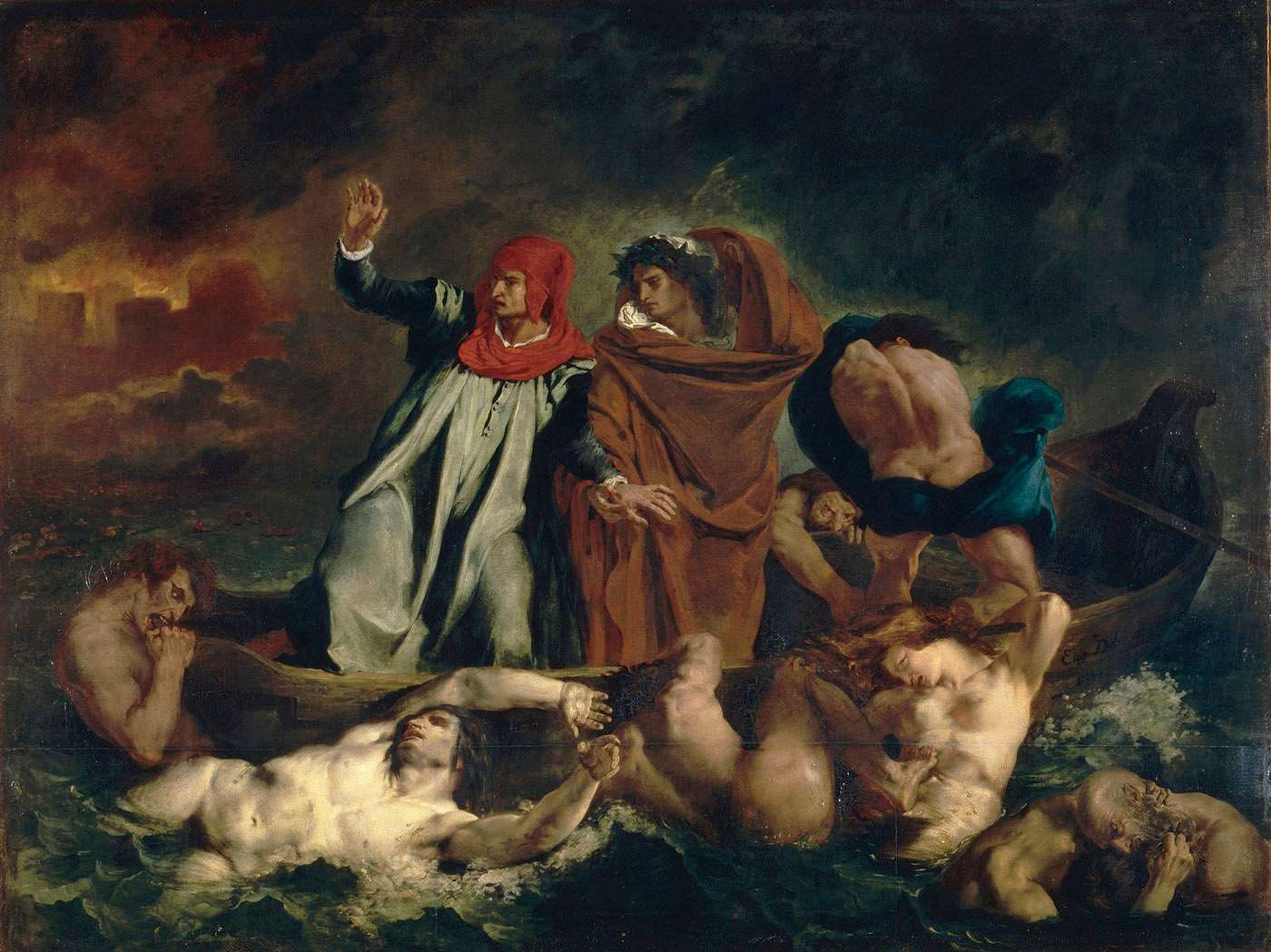
First room, madness, love, hope, war, and patriotism, this is a promising start for both the public and the career of Mr. Delacroix. The bases of his work in a century full transformation, are settled. The line becomes curves, stoicism becomes passion and emotion, orchestrated by a powerful and romantic scenography. And here I am already caught, moved and almost worried by the monumentality of the installation presenting some of the largest formats of the painter’s works.
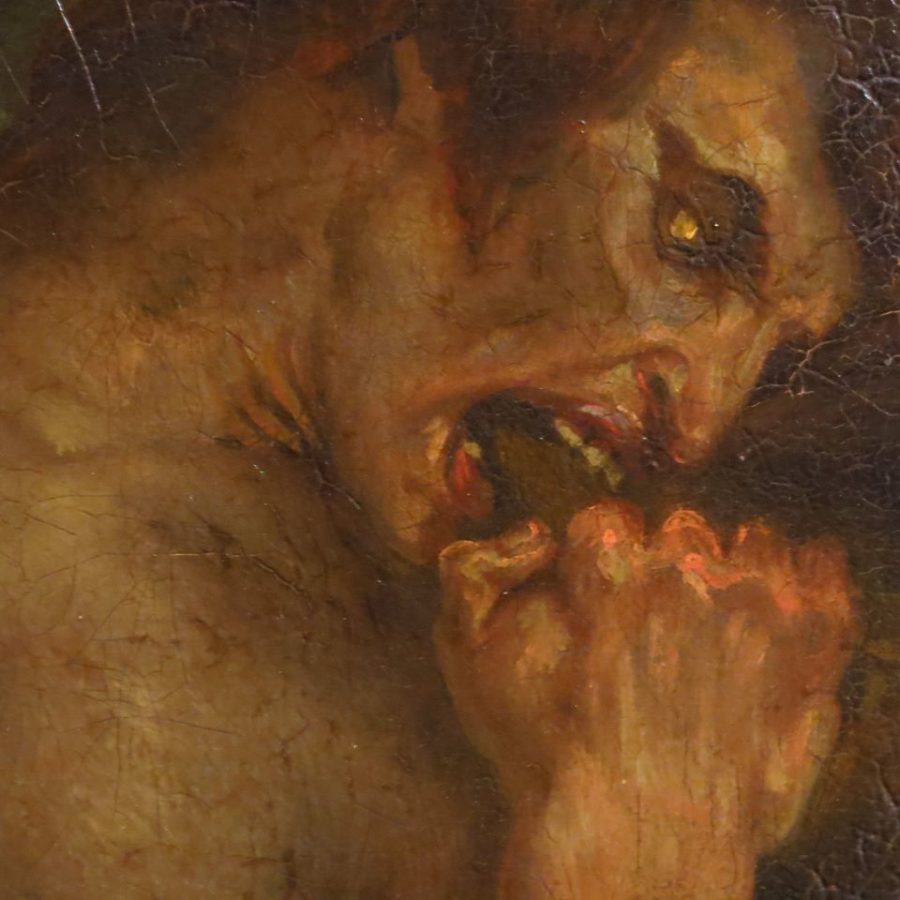
“Freedom Guiding The People”, “The Massacre of Scio” and “Greece on the Ruins of Missolonghi”, will the following parts be as strong?
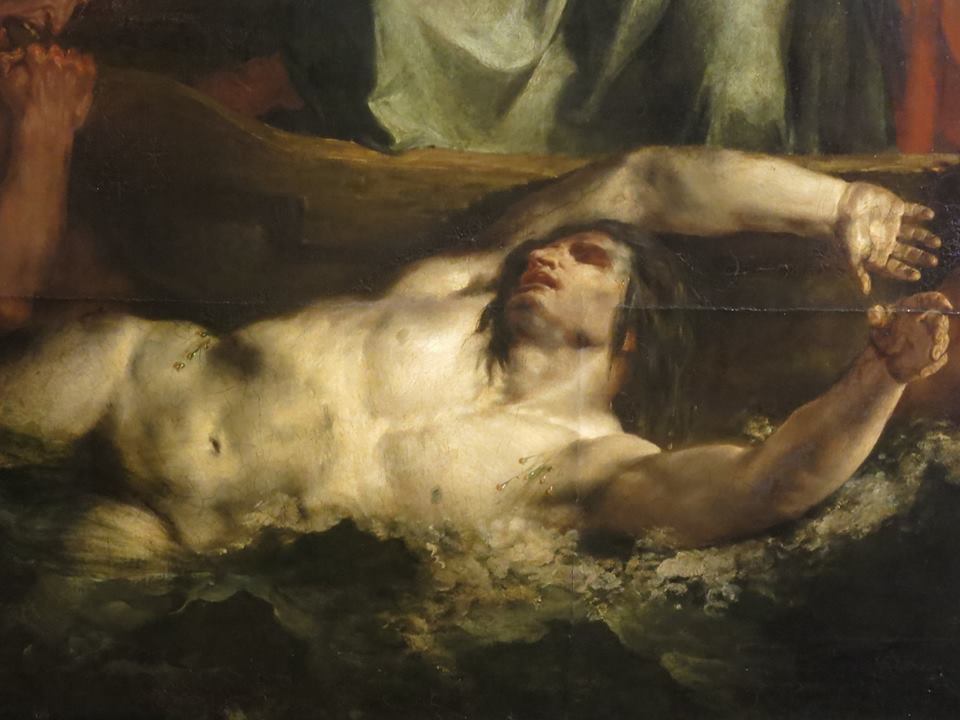
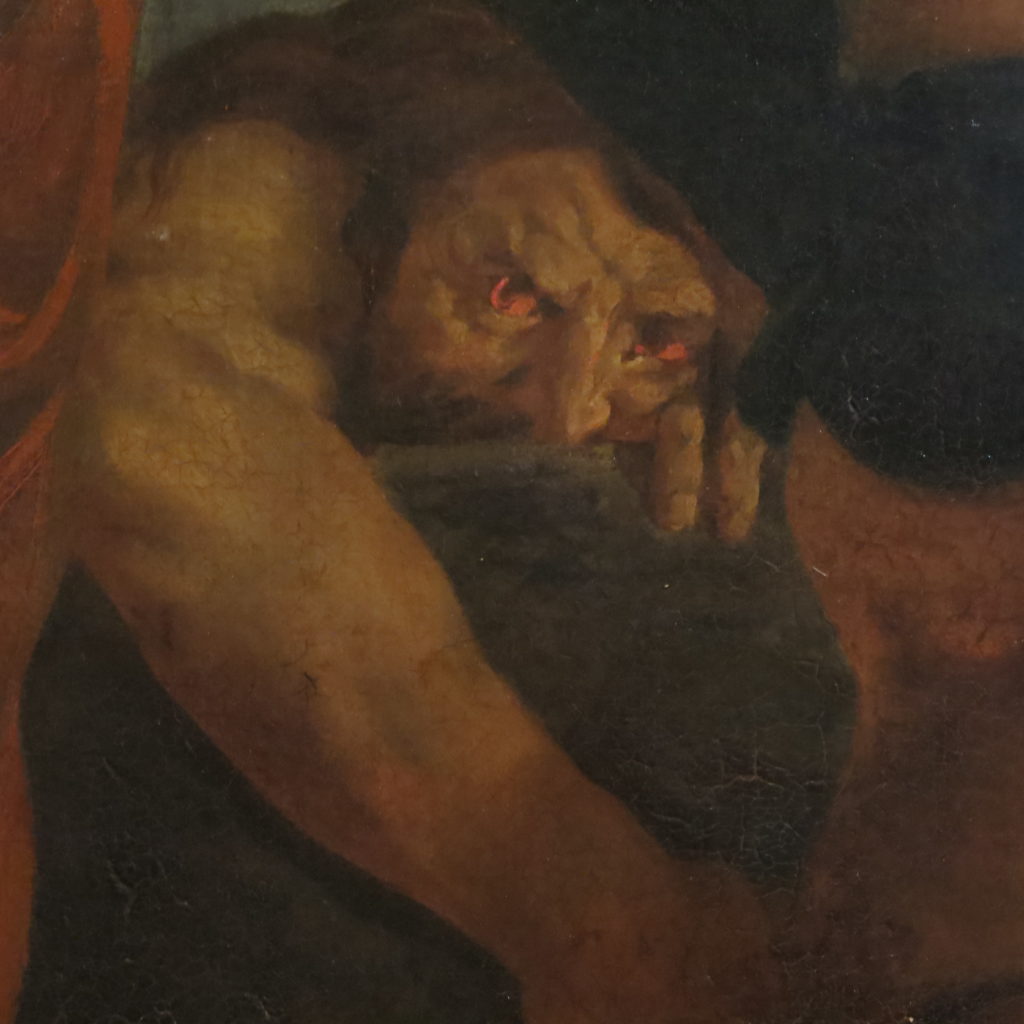
But my worries disappeared quickly, once I see the name of Goethe on the wall announcing the next years of his life… Delacroix, strong of his success at the Salon of 1822, decided to venture into an even darker and more romantic field, exploring the art of lithography. Early in 1824, he noted in his diary his growing interest in the myth of Faust, this tale from the 16th century, re-visited on stage by Johann Wolfgang von Goethe in 1808.
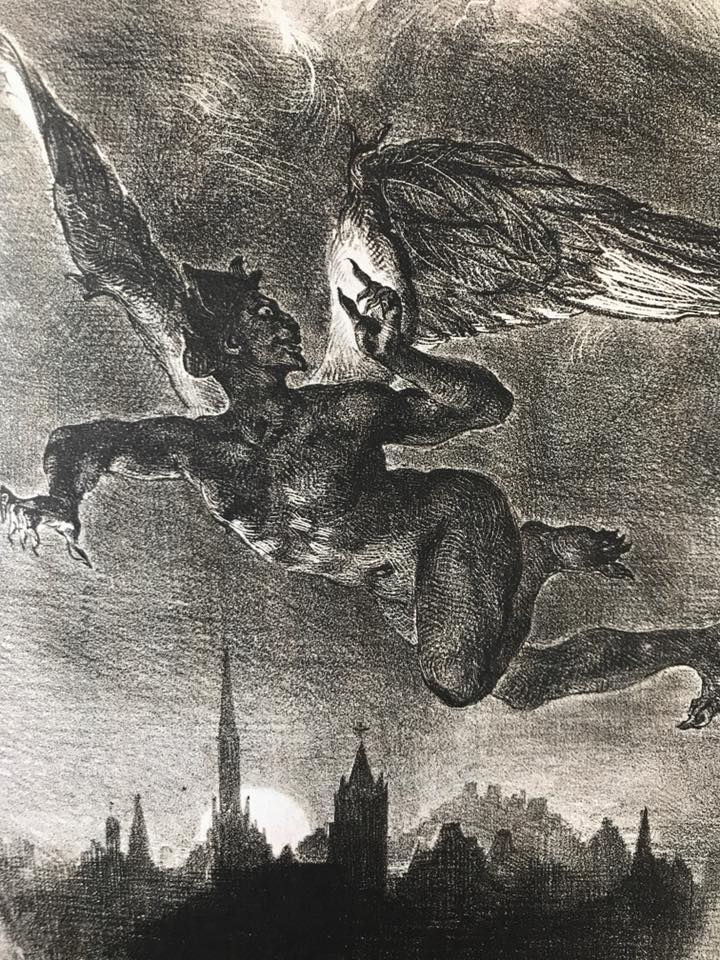
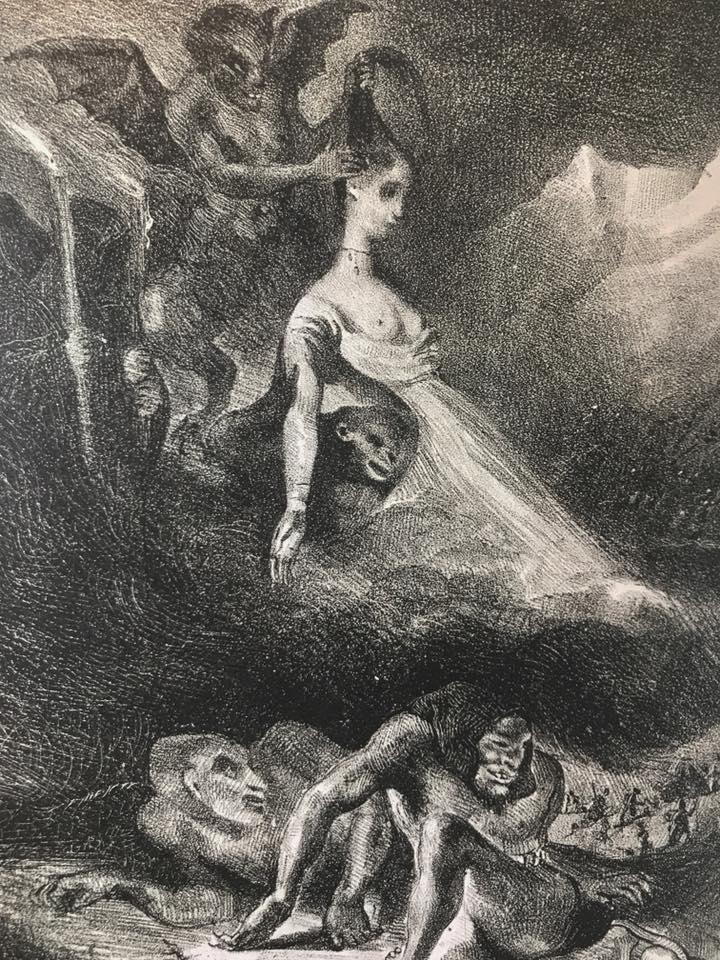
It is about 1826 when the publisher Charles Motte commissions Delacroix to illustrate the first French translation of Goethe’s Faust by Staffer. Delacroix accepts with a clear intention in mind: to illustrate human nature and emotions. He will challenge the audience and readers showing them their own desire for Power, the inextricable quest for eternal life and curiosity towards the underworld.
In a letter exchange between Goethe and Eckermann, Goethe wrote :
Delacroix went beyond my own design for scenes that I wrote myself
I think that it gives us an idea of the impact that these lithographs had at the time. But may the exploration continue…
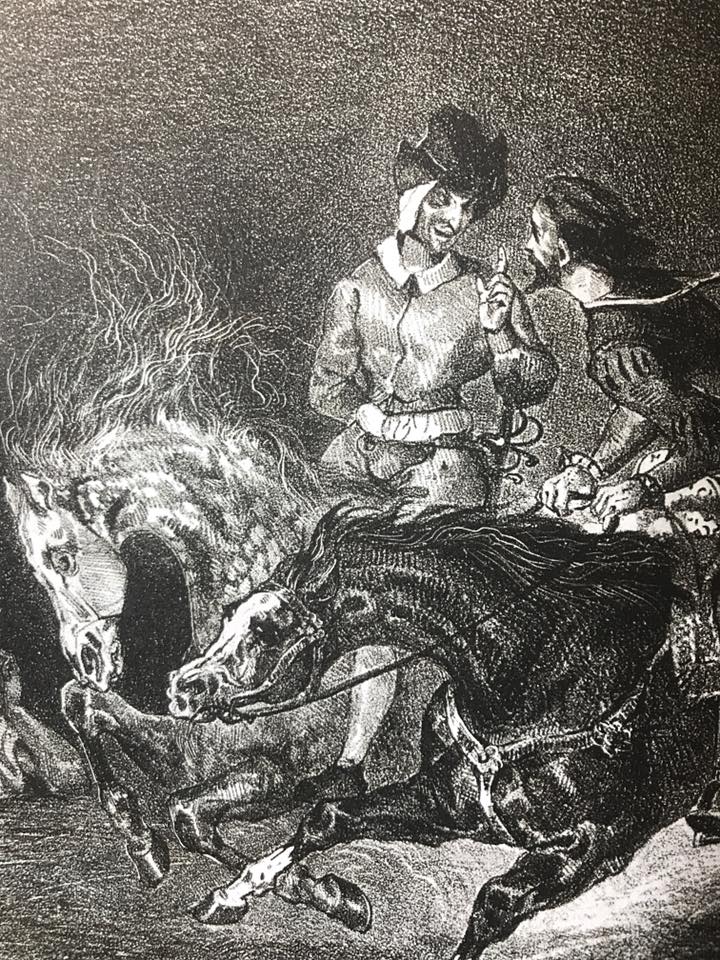
After the poetry of Dante and the fantasy of Goethe, exaltation wins me. So I move forward, feeling like floating in the next part, and a new obsession of this man seized me, Eroticism. Delacroix does not stop creating the surprise; after having proposed “The Massacre of Scio” and “The Barque of Dante”, here we are in front of an orgiastic suicide, “The Death of Sardanapale”.

The scene represented here by Delacroix, tells the dramatic episode of the death of the king of legend Sardanapale that the artist will present in these terms:
The rebels besieged it in his palace … Lying on a superb bed, at the top of a huge bonfire, Sardanapale ordered his slaves and the palace officers to slaughter his wives, his pages, up to his horses and his favorite dogs; none of the objects that had served his pleasures should survive him.
The critics will be almost unanimously negative, but such treatment of composition and the talent are undeniable. It will make a deep impression on the minds, and if the other Salons had not yet made Delacroix a league leader of Romanticism, the year 1827, will.
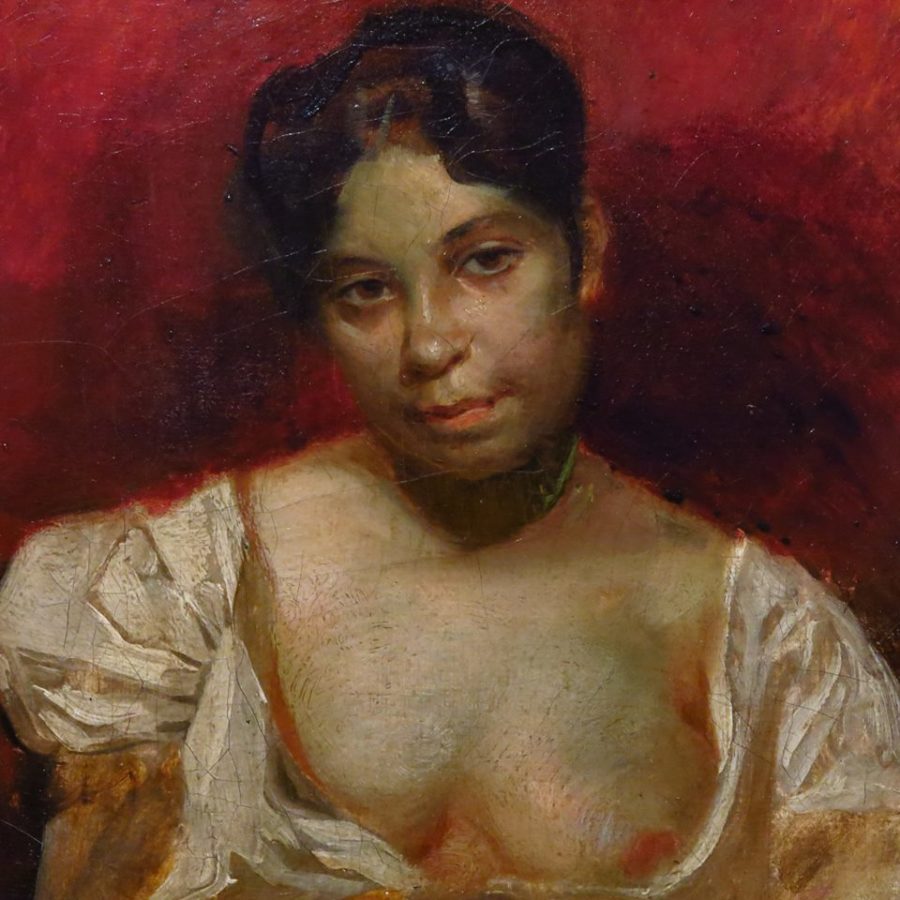
I turn around and understand that the next room breaks down the barriers of female nudity. I can see the intensity of their expressions and their sensual curves.
They can be powerful or lascivious, victims or executioners, all striking and captivating. I leave you with some images …


If the rest of this exhibition is orchestrated as I imagine, at the next detour we should get on board of the boat “La Perle”, destination Tangier.
January 11th, 1832, Delacroix has always had an attraction for the East and so, when Count Mornay offers him the opportunity to go on a diplomatic mission for 6 months to North Africa to take part in the extraordinary visit to Sultan Moulay Abd Al-Rahman, he says yes. But not without hesitation, because in reality Delacroix never was a great traveler. He left France only twice, once to London in 1825 for 4 months and then to Africa, which was this last journey.
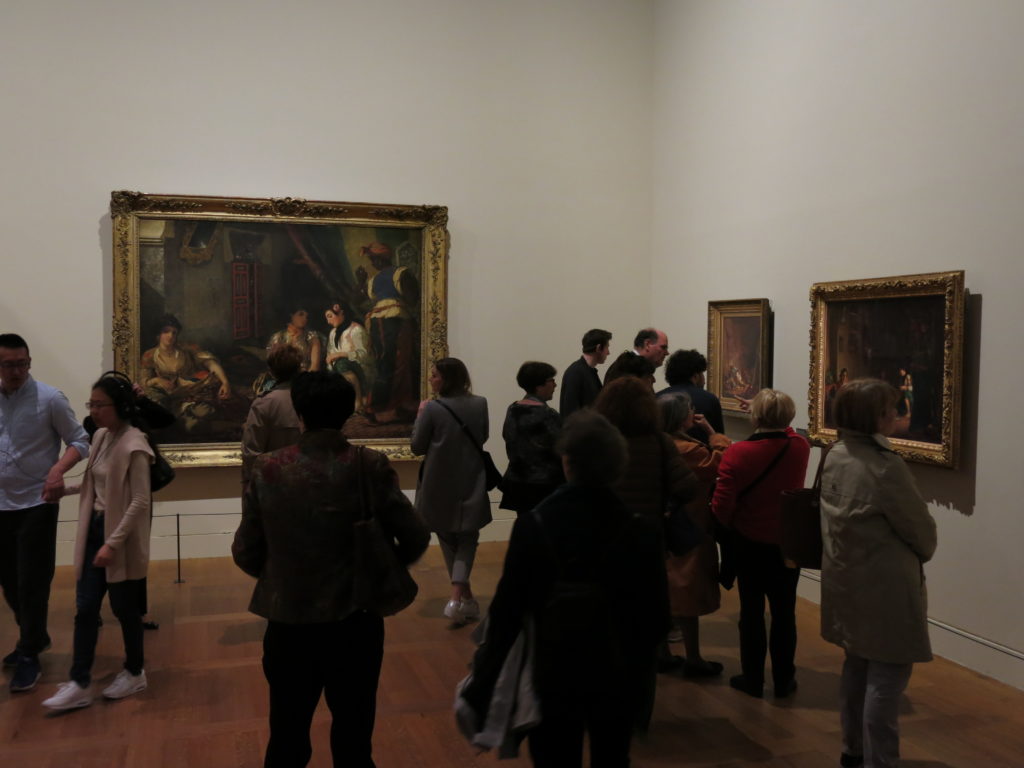
After a long crossing, what Delacroix will discover is not the fantasy vision of the East that the 18th century was depicting (him included), but a culture that will change the course of his life and will influence his work.
What catches my attention here, is how he portrayed the anatomy of his figures. Bones and flesh are only defined by light and strong brushstrokes, the subjects are ‘dancing’ together in a powerful choreography, which could exist only in a dream.
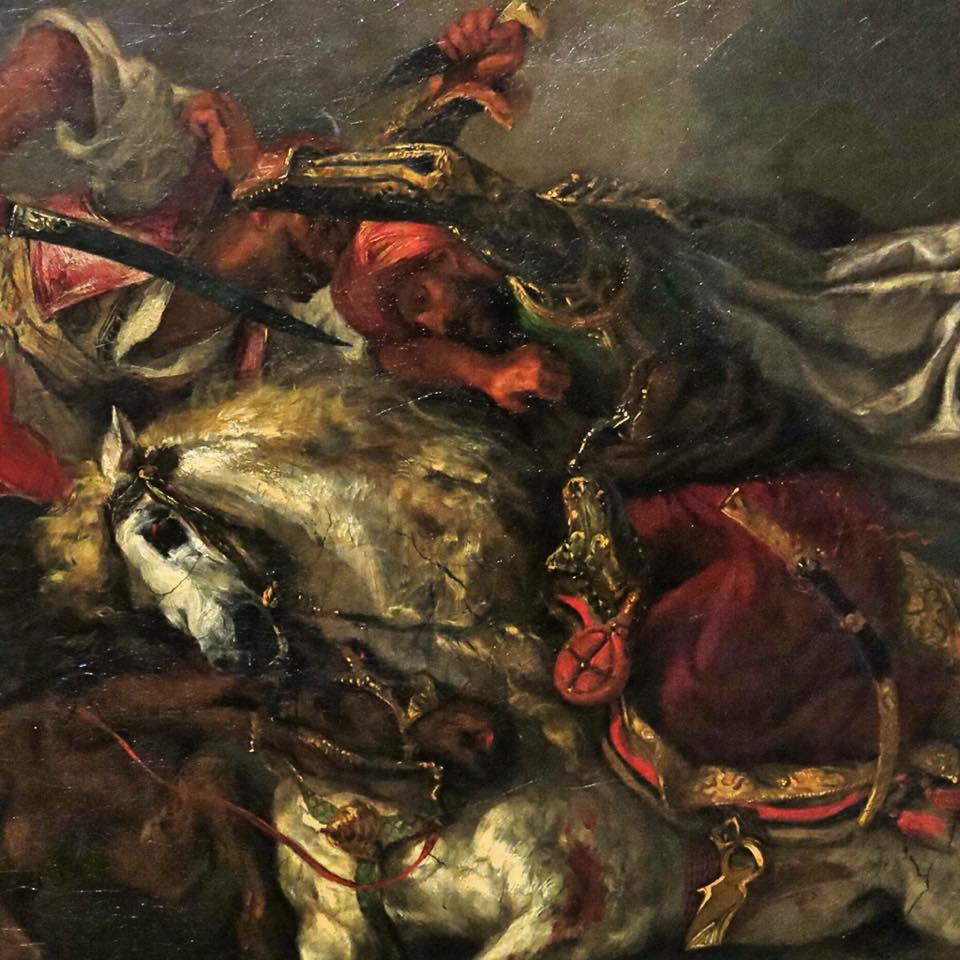
In his Notebooks, he keeps track of his impressions day to day, minutely listing the colors, the architecture, the silhouettes, the attitudes, the itineraries and all the adventures of the journey, noticing even the smallest details.
I’m stunned by what I’ve seen … I’m in this moment like a man who dreams and sees things that he fears to see escape him
Delacroix will not document from the outside but will look for the intimacy of the lifes that cross his path. The beauty of the interiors, the richness of cultures which he will find in traditional outfits, jewels, architecture, and ceremonies.
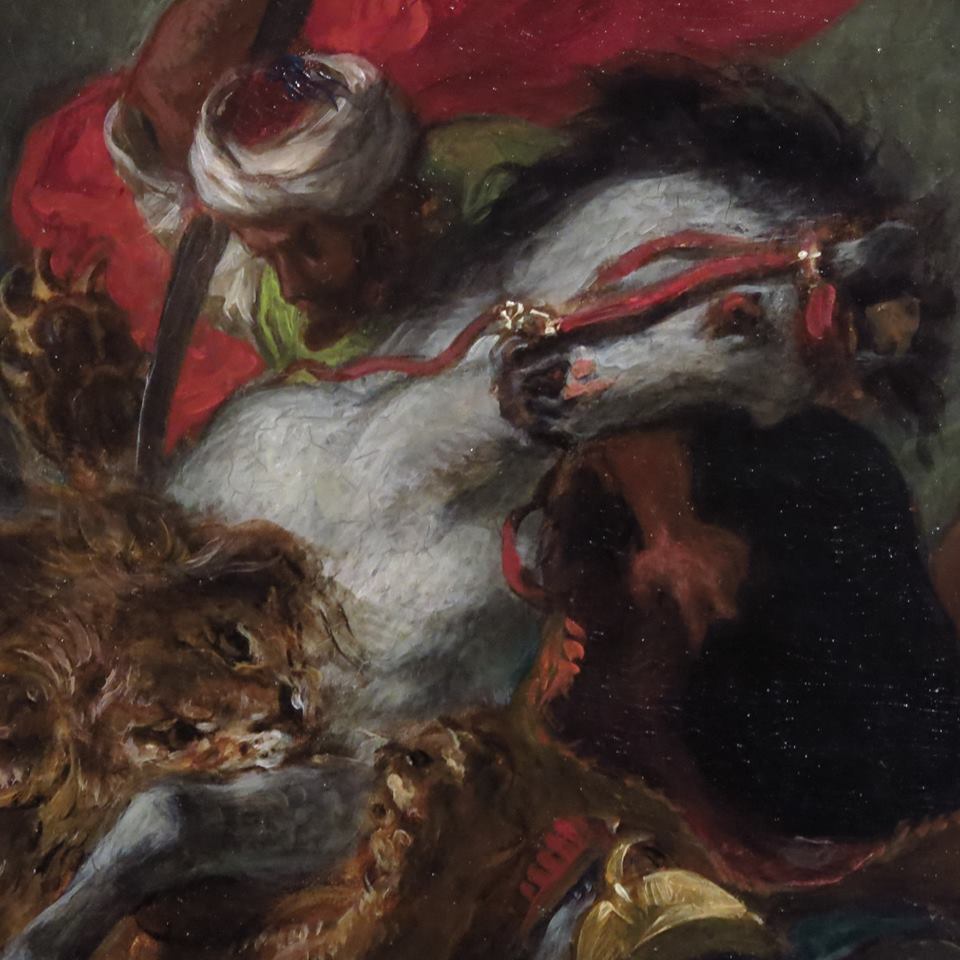

Imagine, my friend, what it is like to see oneself lying in the sun, walking in the streets, mending comforts, consular characters, Cato, Brutus, to whom he does not even miss the disdainful air to have the masters of the world … All in white like the senators of Rome and the Panathenaeans of Athens. […] You believe in Rome or Athens, less atticism; but mantles, togas, and a thousand more ancient accidents.

But the time the journey comes to an end, it is July 1832. And it is on board of “La Perle” once again, that Delacroix will get back to the civilization he once knew… The return will not be easy for Delacroix’s mind, for he no longer finds meaning in the blindfolded and superficial Parisian life he used to be part of, which will push him into isolation for a short time. Later he will continue to appear in society to boost his career but he will become increasingly solitary. From the 1840s, he spent the most time with Jenny Le Guillou, a Breton-born governess, in whom he appreciated common sense, artistic sensibility, and dedication.
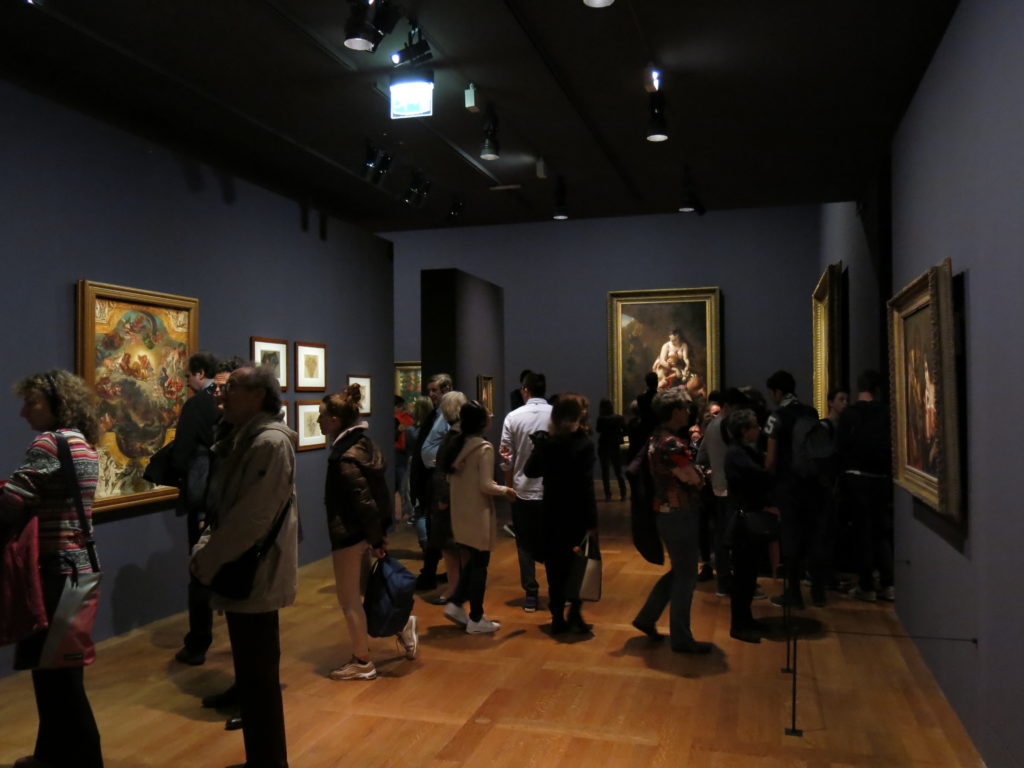
His life does end in social isolation, on the contrary! It is in 1837 that his career takes off: Delacroix begins a new phase of his work painting monumental Murals. Between the ceiling of the library of the Bourbon Palace and the King’s Chamber, passing by the ceiling of Apollo’s room in the Louvre, without forgetting my favorite, the Chapel of the Holy Angels of the Church of Saint Sulpice in Paris, the artist is going to take a breath, he will even speak of a new youth.
In one of his notebooks he wrote :
For several months now, I have been doing a job that has restored my health, which I thought was lost. I get up in the morning, I run to work outside my home: I come back as late as I can and I start again the next day. Nothing charms me more than painting, and now, on top of that, she gives me a thirty-year-old man’s health.
Delacroix is praised by critics and will enjoy a retrospective of his oeuvre at the 1855 Universal Exhibition. Two years later, he will finally be accepted into the Academy of Fine Arts, after seven failed attempts. The same year, while he continues to work on the chapel of Saint Sulpice, he moves into a nearby house which currently hosts the Delacroix museum at “6 rue de Fürstenberg”.
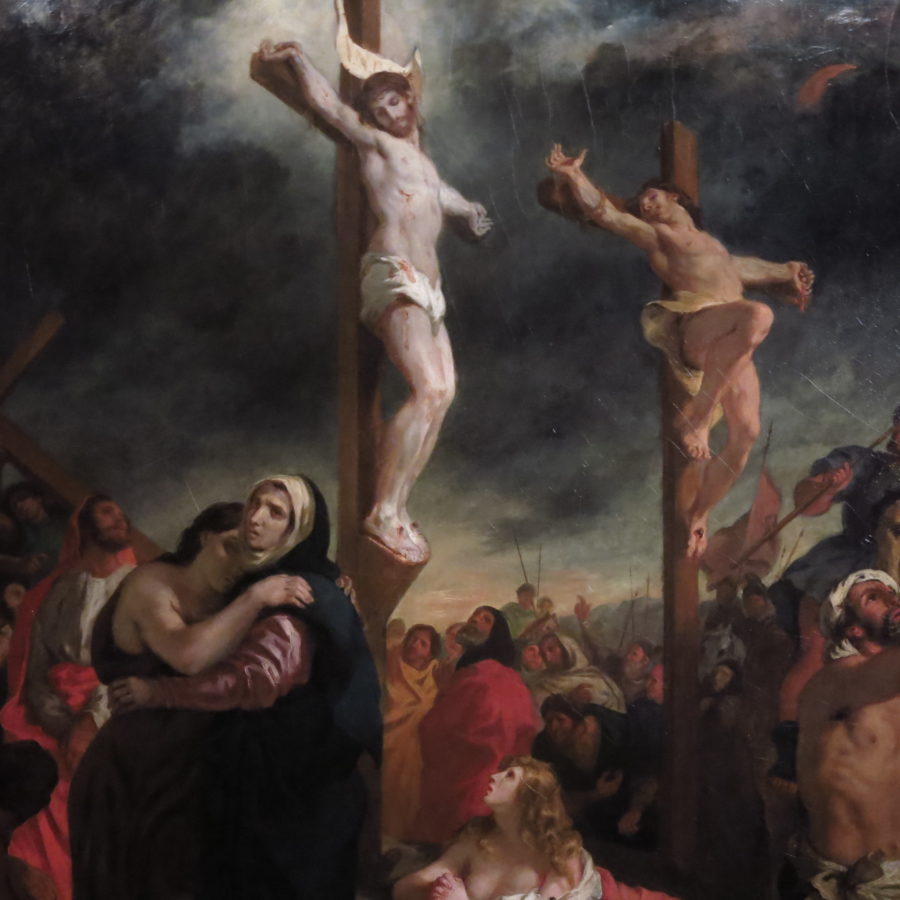
As I continue my visit, I am now encircled with increasingly dark and contrasting canvases. On one side, floral still life paintings are full of life, and on the other, multiple Christs are in suffering. On the Cross, at the Tomb, at the Column or by the lake of Genesareth, religion takes a primacy in his work. Between preparatory studies and large-format canvases, Delacroix starts to progressively reduce his palette to put it at the service of evoking an emotional response.
Everything becomes Clair-Obscur, and immersion in a world in which we find similarities to the style of Rubens and Girodet we are meeting with history and mythology. The light becomes divine and inspires silence, melancholy and inner introspection.
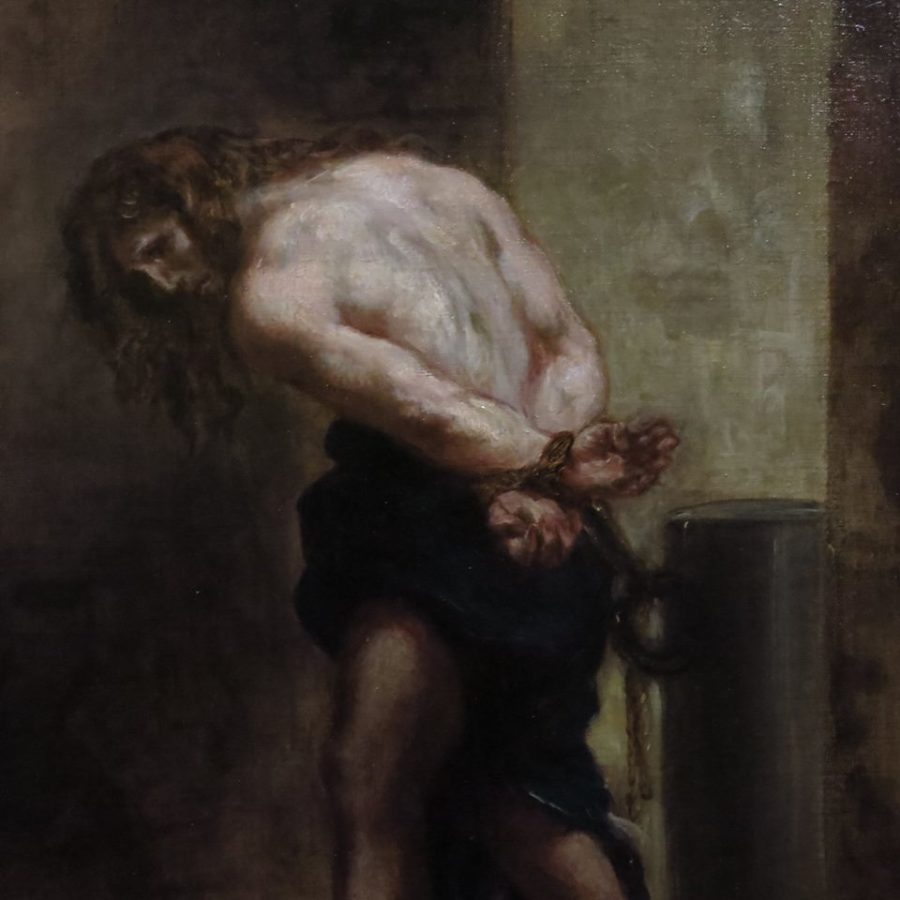
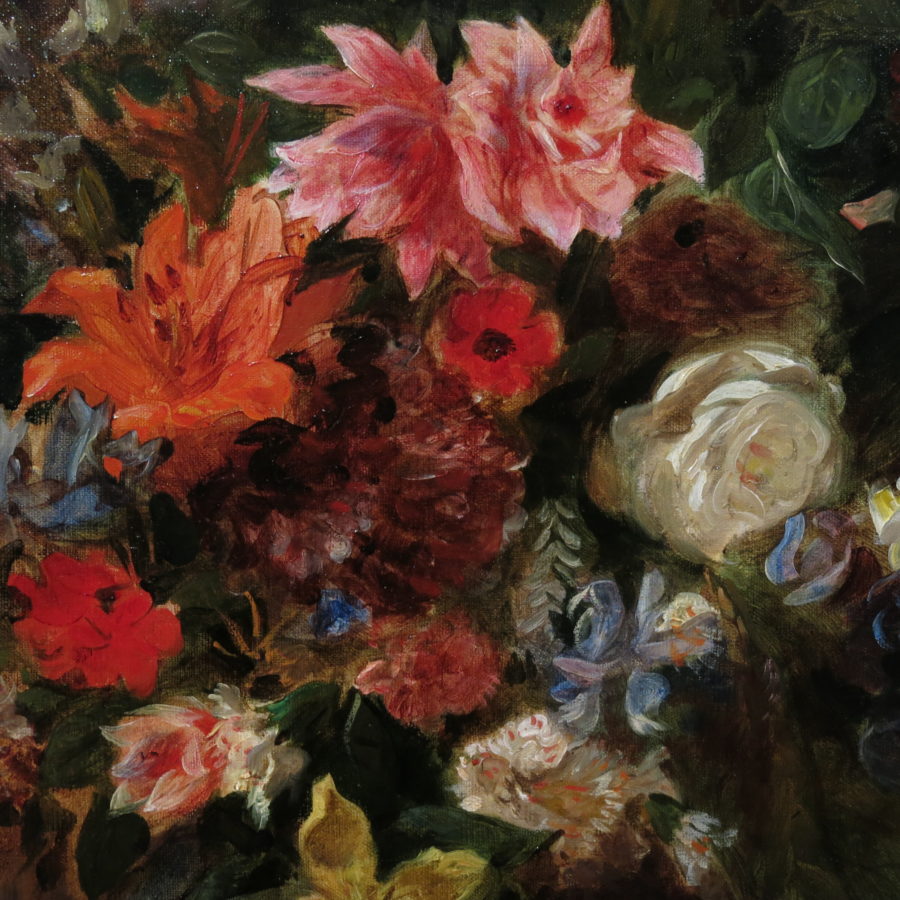
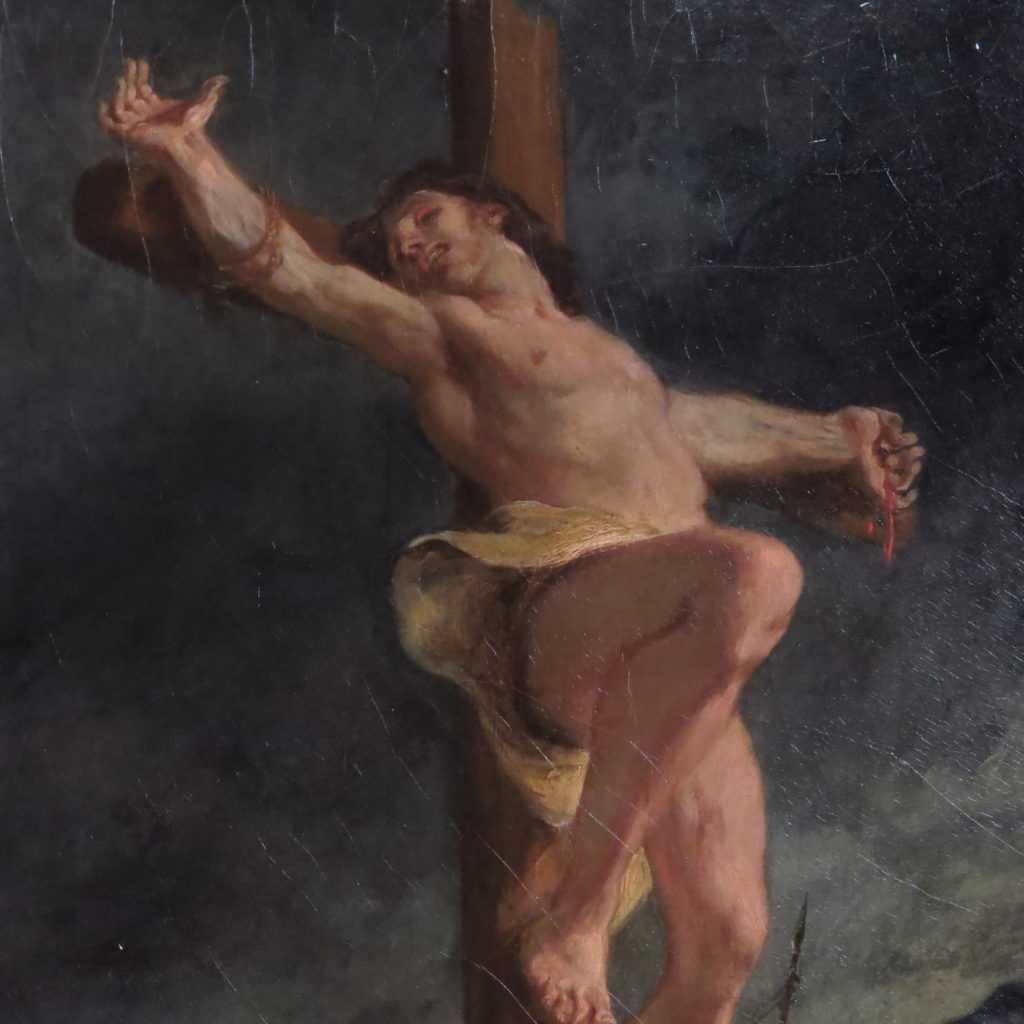
I begin to understand that I am approaching the end of the exhibition and also the end of life of Eugène Delacroix. But the man has not ceased to surprise.
When he reappears in 1859 at the Salon, the critics no longer understand him. Expecting large Romantic works, they are baffled by the nostalgic paintings of modest format. His fantastical landscapes displease while his subjects drawn from Italian writers like Tasso or Ariosto seem outdated.

But Delacroix cultivates the garden of his imagination, which materializes microcosms painted on canvas:
The painter moves in his field and invites us” to offer, at his discretion, “a feast for the eye” he writes on the last page of his diary.
The works that Eugène Delacroix will produce during the last 15 years of his life demonstrate to me his obsessions with the emotional and visual effects better than his monumental paintings presented at the Salons.
The diversity of his art prevents us categorizing him strictly as a Romantic, Classical or Modern painter. The freedom, the audacity, and the passion make him a unique artist, a man of genius who will influence the artists to follow, from the Impressionists to Picasso.
Here I am, at the end of this Grand exhibition, with the death of Eugene Delacroix on August 13th, 1863, in his house on the street of Fürstenberg. I’m emotionally shaken, but full of new energy, a new look and nostalgic perspective about Paris and my environment, a sense of romance and a strong desire for travel and adventure. I do sometimes ask myself how the artists we see in museums and around the world are selected; and why such a painting like “Liberty Leading the People” is shown to us at school as a symbol of a country, a people, and heroes of the democracy. Now I understand it a little better, the best way to learn about our history is by contemplating paintings of Eugène Delacroix, a talented artist and a man of genius.
Visit the museum’s website here.
DailyArt Magazine needs your support. Every contribution, however big or small, is very valuable for our future. Thanks to it, we will be able to sustain and grow the Magazine. Thank you for your help!